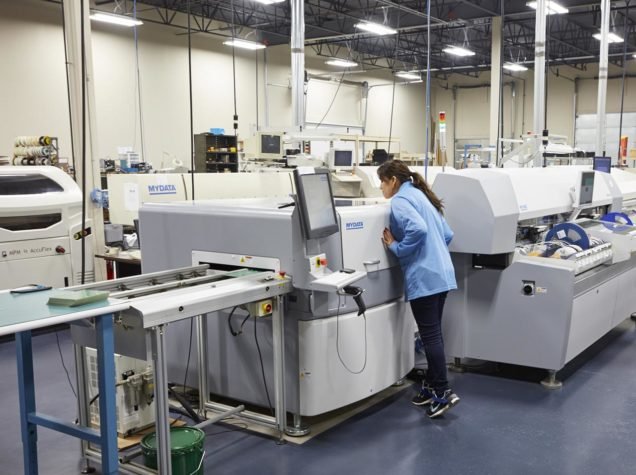Solder jet printing: What you need to know for SMT Printed Circuit Board outsourcing
“More good boards, faster.” That’s the basic reason for using solder jet printing. Since solder quality is a major factor in SMT board defects, high-quality solder jet printing can play a major role in striking the balance between throughput (speed) and output (PCB quality).
Types of Solder Paste Printers
There are two types of solder paste printing machines, stencil and solder jet, but Caltronics depends on solder jet printing for good reasons. SMT stencil printing machines require a stencil that takes at least a day to make. If every aperture has been sized perfectly for the design, stencil printing works quite well. However, if one or two components need aperture size changes for zero-defect soldering, you need to remake the stencil—which means more time and more money. With solder jet printing, any changes required after the first board run can be made in just minutes.
Another downside to SMT stencil printers is that they have a hard time handling today’s densely packed boards, flexible circuits, multi-level chip packages, package-on-package components, and boards with small components positioned near components requiring large amounts of solder. Solder jetting can meet those application demands, and also offers printing speeds that keep pace with pick-and-place machines rated at 36,000 components per hour.
How solder paste printing works—and why
A solder jet printer deposits a precise dot of solder paste in a pre-programmed location on a board. Most solder jet printers (including the MyData MY500 at Caltronics) are completely software-driven so they can apply precisely controlled solder paste volumes onto complex boards for perfect solder joints. This means ideal results for QFNs, pin-in-paste, package-on-package and other new applications such as jetting into board cavities.
Because solder jet printing systems use a flexible software solution, it’s easy to streamline SMT stencil production and change over to new board designs. Every job that uses a printing machine is prepared using CAD or Gerber data, so the PCB manufacturer can prepare and print a new job quickly and precisely.
When you’re selecting a PCB contract manufacturing partner, you’ll want to consider your project in terms of:
Production volume/speed
Board density
Chip packages used
If your project requires both high production speed and excellent solder joint quality, you’ll want to choose a PCB manufacturer with proven solder jet printing equipment and experience.

